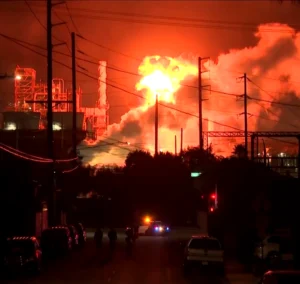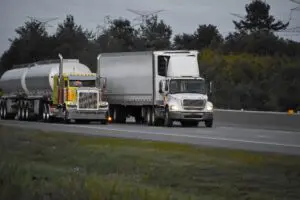The industry faces a deficit of approximately 24,000 truck drivers, with an average of 7,213 job openings daily.
A recent report by altLine, published on January 14, highlights the negative impact of the driver shortage in the U.S. road transportation sector. The study, which analyzed data from November 22 to December 5, 2024, reveals that the industry faces a deficit of approximately 24,000 truck drivers, with an average of 7,213 job openings daily. This shortage is causing a cost of up to $95.5 million per week, severely affecting the efficiency of the sector and its potential revenue.

The magnitude of the problem: million-dollar losses
The driver shortage is leaving many trucks idle, leading to a reduction in the income the sector could generate. According to altLine’s report, if all registered trucks in the country were operating, the industry could generate up to $47.4 billion annually. However, the lack of drivers is causing a potential loss of nearly $50 billion every week, considering both heavy-duty trucks and straight trucks, whose combined revenue is far from being achieved due to the labor shortage.
The report also presents a detailed map of the demand for truck drivers in different states. Missouri is the state with the most job openings, with an average of 202 vacancies daily, meaning there are about 673 vacancies available at any given time. On the other hand, Wyoming stands out for having the highest demand for drivers relative to its population, with one vacancy for every 1,031 residents. Texas, despite being one of the states with the highest transportation volume, has relatively low demand compared to its population, which leads to greater competition among drivers.
Another crucial factor in the analysis is job turnover in the sector. Ohio and Nebraska stand out for their high turnover and quick hiring times, with Nebraska reaching an average of just 2.5 days to fill a position. However, Indiana shows a lower turnover rate and an average hiring time of nearly two weeks, indicating that employers are facing greater challenges in finding and retaining drivers.

A national economic challenge
The truck driver shortage is not just an isolated labor issue but a large-scale economic challenge. The economic losses for the freight transportation and supply chain sector are immense, affecting not only transportation companies but also consumers and the economy as a whole. While some states face bigger challenges than others, the impact is nationwide and affects businesses everywhere.
One potential solution to mitigate this problem is load factoring, which offers financial stability to transportation companies. This allows them to focus on solving the driver shortage while keeping their operations running, ensuring that the transportation sector remains vital to the U.S. economy. New methodologies are needed to address this issue effectively.

World Smile Day: benefits of sharing a smile
World Smile Day is celebrated on the first Friday of October, so let’s do an act of kindness and help one person smile. World Smile

Massive fire at Chevron refinery sparks safety concerns and fuel price fears
A massive fire broke out at Chevron’s refinery in El Segundo, the largest oil production facility on the West Coast. On the night of October

MEET operation: 82 commercial vehicles inspected at the Wyoming-Colorado border
The MEET operation, a traffic enforcement operation targeting CMVs, was carried at the Wyoming and Colorado border. A traffic enforcement operation targeting commercial motor carriers,

Road safety reforms: coalition demands for results
The Truck Safety Coalition (TSC) calls for road safety reforms following deadly truck crash report. The Truck Safety Coalition (TSC) is calling for safety reforms

DOT suspends federal funding in New York amid civil rights review
U.S. DOT announces interim final rule banning race- and sex-based contracting requirements in federal grants. The U.S. Department of Transportation (DOT) has issued a statement

U.S. government shutdown begins: how will the transportation industry be affected?
A U.S. government shutdown began a shutdown on October 1, 2025, but the Department of Transportation released its operational plan. The U.S. government shutdown began
